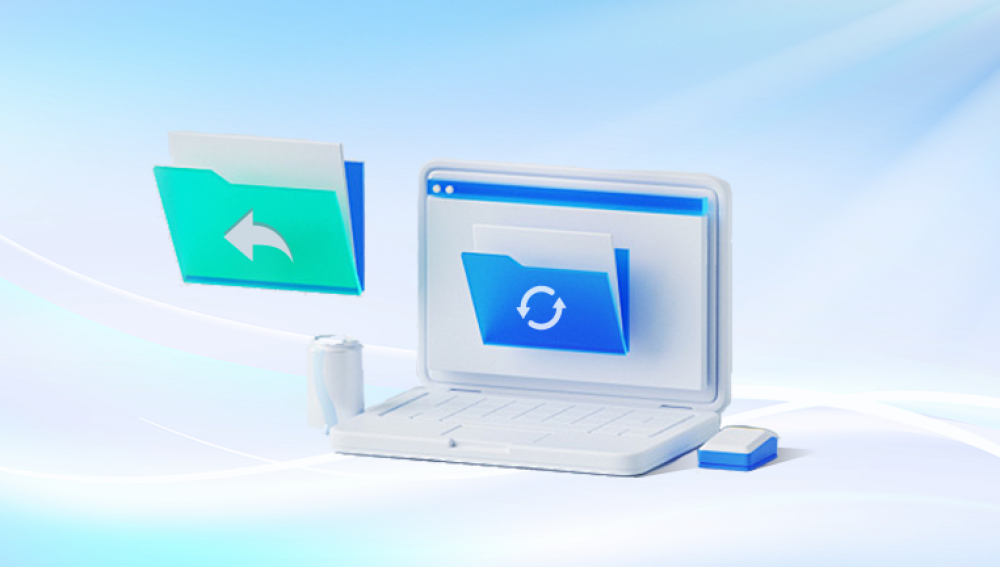Accidentally deleting a file can be alarming, especially if it contains important work, precious memories, or critical information. But don’t panic. In most cases, deleted files can be recovered using a variety of methods depending on the situation and the operating system you use.
Chapter 1: What Happens When You Delete a File?
What actually happens when a file is deleted helps clarify how recovery is possible.
Recycle Bin / Trash: When you delete a file normally, it usually moves to a temporary storage area—the Recycle Bin on Windows or Trash on macOS—where it stays until permanently deleted.
.jpg)
Permanent Deletion: Using Shift + Delete on Windows or emptying Trash permanently deletes the file, but often the data remains on disk until overwritten.
File System Behavior: The file system marks the space occupied by the deleted file as available but doesn’t immediately erase the data. Until overwritten by new data, recovery is feasible.
Formatting: Formatting a drive removes directory entries but often leaves data intact, recoverable by specialized software.
Overwriting: Writing new files over deleted data makes recovery difficult or impossible.
The key to successful recovery is to stop using the device immediately to prevent overwriting deleted files.
Chapter 2: Start with the Easy Solutions – Check Recycle Bin or Trash
Windows: Recover from Recycle Bin
Open the Recycle Bin icon on your desktop.
Use the search bar to locate your deleted file.
Right-click the file and select Restore.
The file will be restored to its original location.
macOS: Recover from Trash
Click on the Trash icon in the Dock.
Browse or search for the file.
Right-click and select Put Back.
The file will return to its original folder.
If your file is there, recovery is just a click away.
Chapter 3: Undo Delete (Windows) and Time Machine (macOS)
Undo Delete (Windows)
If you just deleted a file, you can try:
Press Ctrl + Z immediately in the folder where the file was.
Right-click in the folder and select Undo Delete.
Time Machine Backup (macOS)
If you use Time Machine for backups:
Connect your Time Machine backup drive.
Open the folder where the file was deleted.
Click the Time Machine icon in the menu bar and select Enter Time Machine.
Browse backups by date and select the file.
Click Restore.
Chapter 4: Recover Previous Versions and File History (Windows)
Windows includes features like File History and Restore Previous Versions to help recover deleted or overwritten files.
How to Use File History
Open Settings > Update & Security > Backup.
Ensure File History is turned on and configured.
To restore files, go to the folder where the file was stored.
Right-click the folder and choose Restore previous versions.
Select a version from the list and click Restore.
If File History is disabled, consider enabling it for future protection.
Chapter 5: Check for Temporary Files or AutoRecover Files
Many programs, especially Microsoft Office, save temporary or AutoRecover files.
Microsoft Office AutoRecover
Open the Office program (Word, Excel, etc.).
Go to File > Info > Manage Document > Recover Unsaved Documents.
Browse for the unsaved file and open it.
Save it immediately.
Temporary files may be stored in:
Windows: C:\Users\[YourName]\AppData\Local\Microsoft\Office\UnsavedFiles
macOS: ~/Library/Containers/com.microsoft.[app]/Data/Library/Preferences/AutoRecovery/
Chapter 6: Use Data Recovery Software
Drecov Data Recovery
When you delete a file, your operating system typically just marks the space as available without immediately erasing the data. This means the file can often be recovered unless overwritten by new data. Drecov Data Recovery is designed to scan your storage device deeply and find these “lost” files, allowing you to recover them safely.
To get started, download and install Drecov Data Recovery on your computer. Be sure to install it on a different drive than the one where the file was lost to avoid overwriting any data. Open the program, select the drive or device from which you want to recover files, and choose between a quick scan for recent deletions or a deep scan for thorough recovery.
After scanning, Panda will display a list of recoverable files. You can filter results by file type, name, or date to locate your accidentally deleted file faster. Preview the file to confirm it’s the correct one, then select it and click “Recover.” Make sure to save the recovered file to a different location than the original.
Drecov Data Recovery supports all major file formats and file systems, making it a versatile tool for data retrieval. With its user-friendly interface and powerful recovery engine, Drecov Data Recovery ensures your accidentally deleted files aren’t lost forever.
Chapter 7: Recover Files from External Devices
External drives, USB sticks, and SD cards do not send deleted files to Recycle Bin. For these devices:
Use data recovery software compatible with removable media.
Connect the device to your computer.
Run scans as described above.
Recover files to your main drive to avoid overwriting.
Chapter 8: Command Line Recovery (Advanced)
For tech-savvy users:
Windows
Use chkdsk and attrib commands to attempt recovery:
bash
CopyEdit
chkdsk X: /f attrib -h -r -s /s /d X:\*.*
Replace X: with the drive letter.
macOS/Linux
Use command line tools like testdisk or photorec to scan and recover files.
Chapter 9: Recovering Files After Formatting
Formatting a drive typically removes directory info but not data immediately.
Avoid writing new data to the drive.
Use recovery software with deep scan or raw recovery mode.
Recover files to another drive.
Chapter 10: Cloud Storage Recovery Options
Files saved in cloud services can often be restored via the web interface:
OneDrive
Go to the Recycle Bin in OneDrive online.
Restore deleted files.
Use Version History for overwritten files.
Google Drive
Visit the Trash folder.
Restore files.
Use Manage Versions for prior versions.
Dropbox
Use the Deleted Files feature.
Restore deleted files within 30 days (longer on paid plans).
Chapter 11: Recover Overwritten Files Using Version History
If a file was overwritten, many platforms offer versioning:
Windows: Right-click file > Properties > Previous Versions
OneDrive/SharePoint: Right-click > Version History
Google Drive/Dropbox: Manage versions online
Restore an earlier version to recover lost content.
Chapter 12: Professional Data Recovery Services
If hardware failure or severe corruption prevents recovery, professional services can help.
DriveSavers
Ontrack
Gillware
They can recover data from damaged drives but are costly.
Chapter 13: Preventing Future Data Loss
Regular backups: Use cloud services or external drives.
Enable File History / Time Machine.
Save work frequently and use AutoSave.
Avoid emptying Recycle Bin hastily.
Use surge protectors to prevent power loss damage.
Accidentally deleting a file is stressful, but with a systematic approach, you can often recover your data. Start by checking easy options like Recycle Bin and backups. If those fail, try recovery software and cloud versions. Finally, professional services are a last resort.
Most importantly, act quickly and avoid using the drive to prevent overwriting data. With patience and the right tools, you can retrieve deleted files and safeguard your important data for the future.




